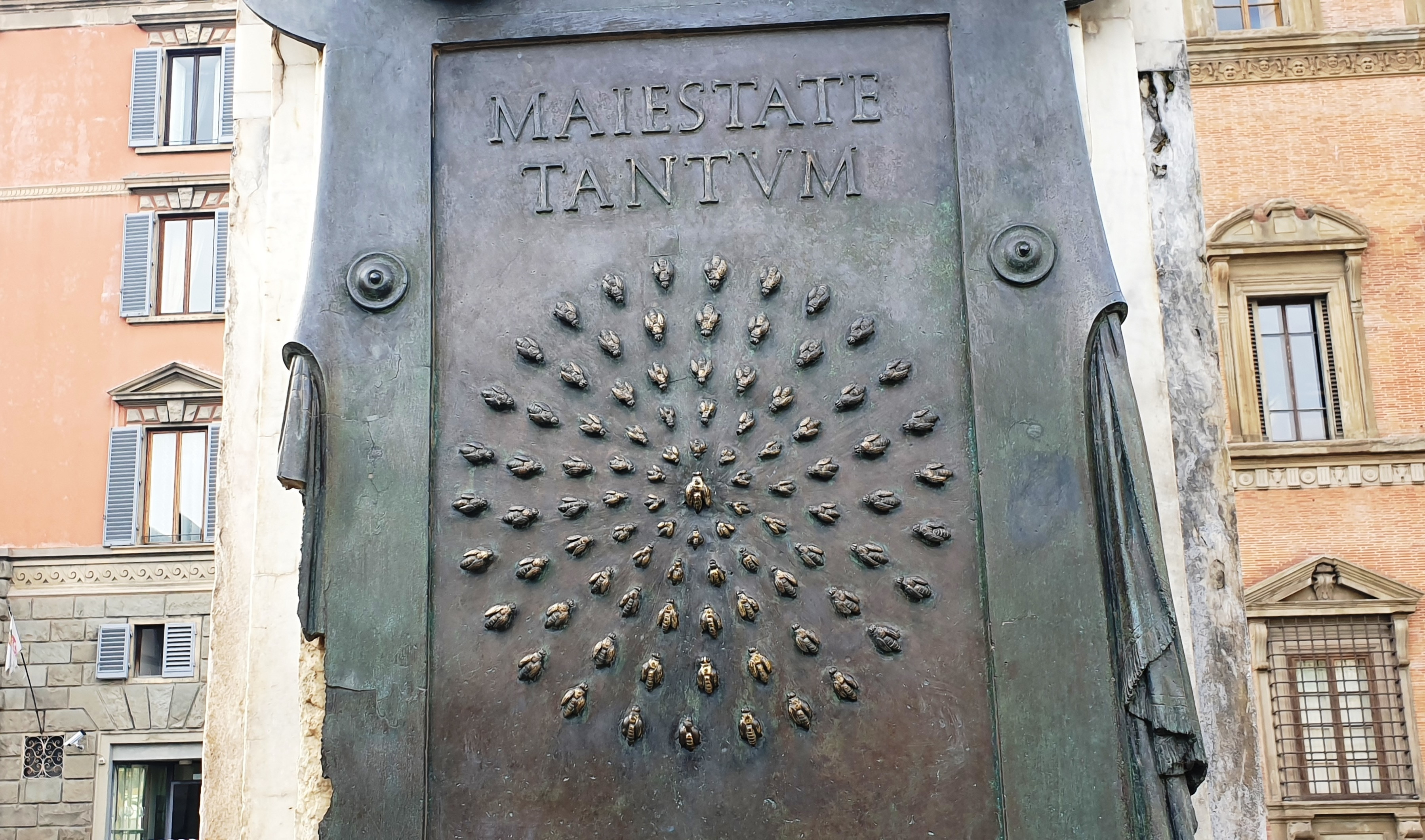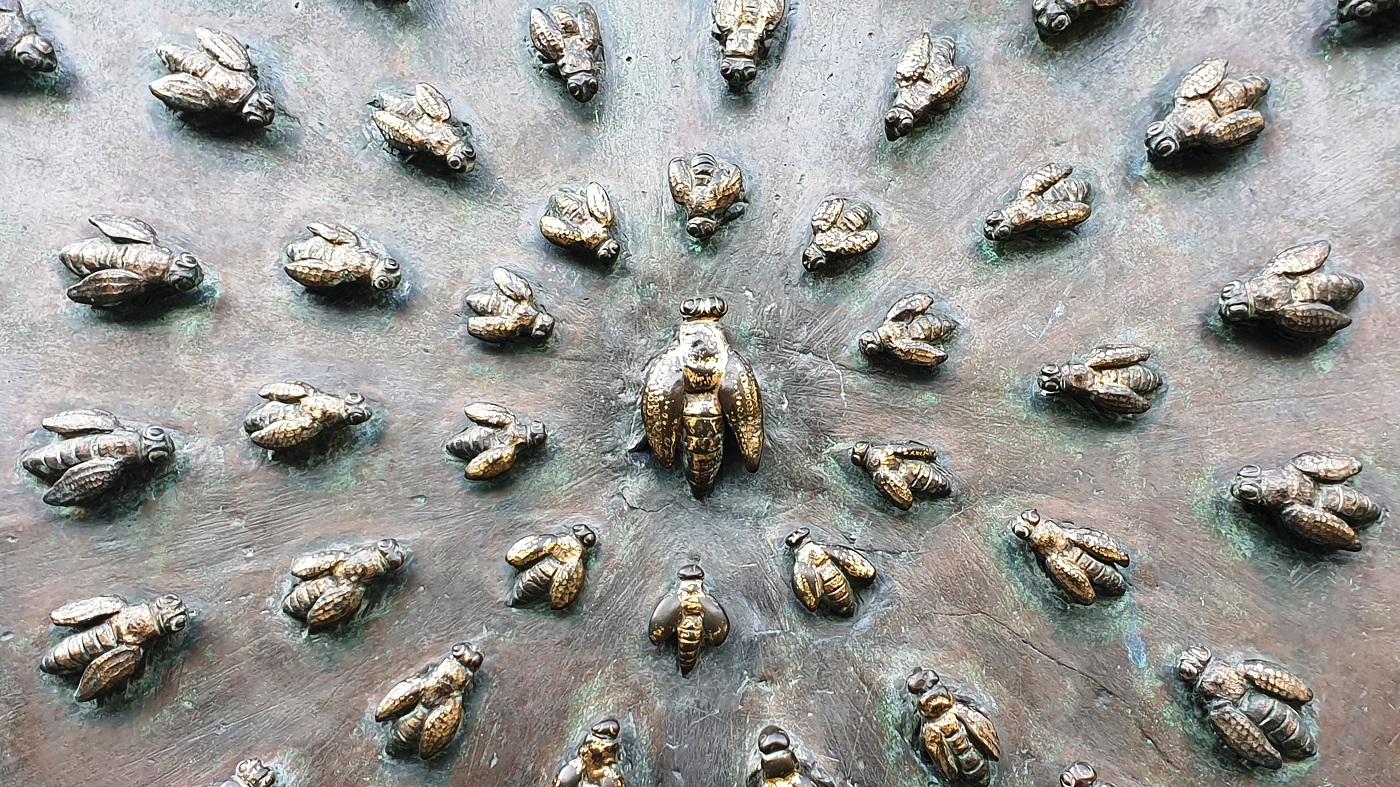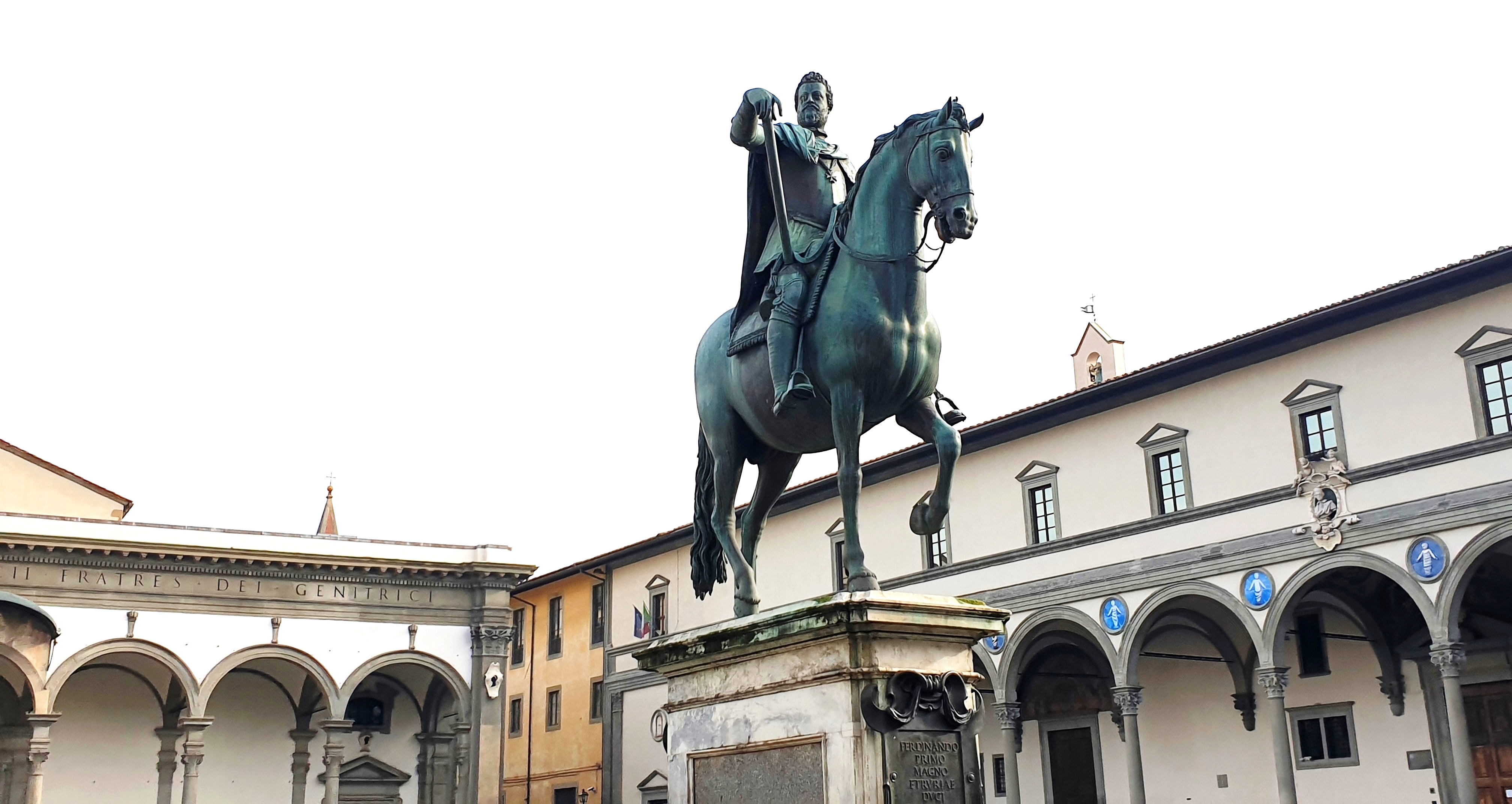
Ferdinando's bees
Always reported among the curiosities of Florence are Ferdinand's bees, incrediblity hard to count. It is said that whoever manages to count them without touching or marking them, will be blessed with luck. Let's see what this is
all about.
At the center of Piazza SS. Annunziata we find the bronze
monument of Grand Duke Ferdinando I dei Medici (1543 - 1609) on horseback, by
Giambologna (1529 - 1608). Jean de Boulogne, known as Giambologna, was an
important Flemish sculptor who worked for a long time in Tuscany and whose
masterpiece is undoubtedly the marble sculpture of the Abduction of the Sabine Women, in
the Loggia della Signoria.
For the monument of Ferdinand I was used bronze molten from the cannons of Turkish ships that were captured by
the knights of the Military Order of Santo Stefano, of which the Grand
Duke was Grand Master. The cross
of the order, red on a white background with gold lilies, stands out on the Duke's armor. This order, established in 1562 by Pope
Pius IV and Cosimo I dei Medici, father of Ferdinando, was based in Pisa
and had the task of fighting Ottoman pirates and recovering Christian prisoners
reduced to slavery. At that time, pirates infested the Mediterranean sea, often
sacking the coast towns and kidnapping inhabitants, who were then sold as
slaves in North Africa. Historians say that at least 1 million people were
kidnapped over the centuries. The horse's belt bears the inscription: "De'
metalli rapiti al fero Trace” (made from metals taken from the fierce Thracians).
We don’t know why Ottoman pirates are here defined as Thracians.
On the back of the stone base you can see a bronze plate with
a Latin inscription, Majestate Tantum
(translation: Only for his majesty) and the famous bees, arranged around the queen bee in concentric circles. It is a "heraldic enterprise", that is, a symbolic representation with
a motto, with which a noble or his entire family identified. The meaning
of the image is clear: the Grand Duke is the center, the cornerstone of the State, and the hard-working, orderly, peaceful people surround him.
In reality, aside from the rhetoric, Ferdinando was a
discreet administrator of the Florentine State and in particular of its
businesses, since the Medici were great bankers. Beloved enough by the people, he
was lucky to live in a period of prosperity for Tuscany, that was not involved
in wars and invasions. He was unlike other Medici Grand Dukes, like his brother and
his son, who were totally not interested in the State.
Now for the bees: as we said it seems that it is very difficult to count
their exact number. We found it actually not so difficult because the bees are arranged symmetrically. If they were scattered, then yes it would be very
difficult. However, to kepp the suspence, the sources that mention them never provide their number. So we won't give it either, you should find out for yourselves. Florence, Piazza
Santissima Annunziata.

Bees in detail with the queen bee in the center

Grand Duke Ferdinando I Medici on horseback



